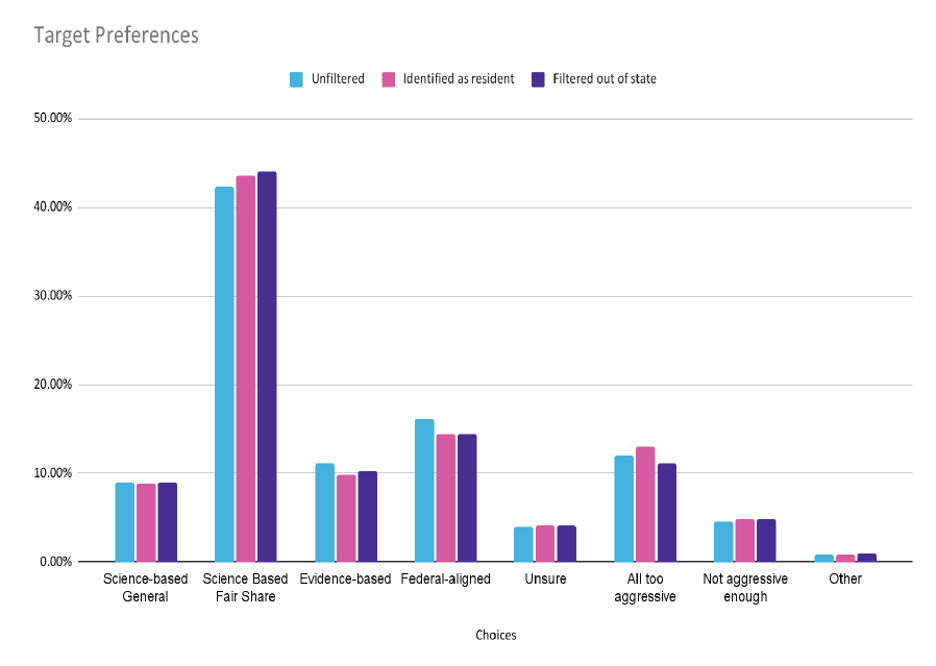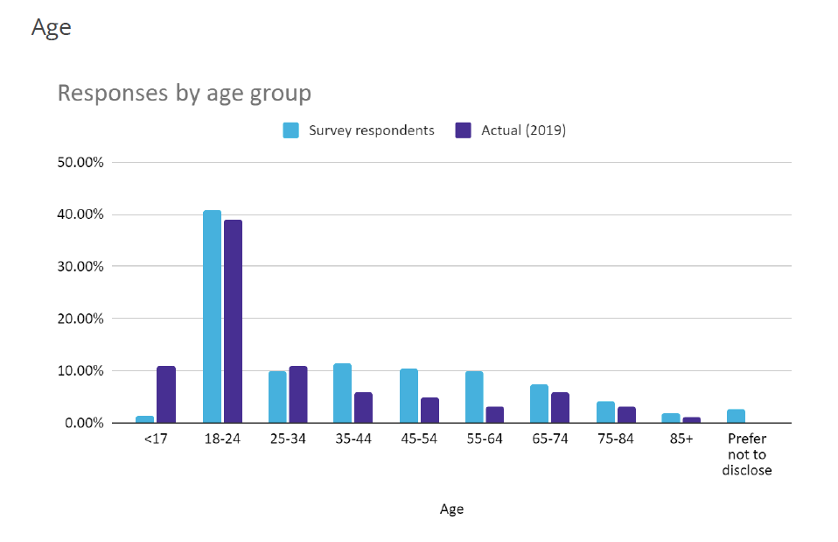Community support for climate action
- Dr. Lee Anne Willson

- Dec 20, 2021
- 5 min read
What kind of climate action plan do residents want?
Community support As part of the process of developing a Climate Action Plan for Ames, the consultants (SSG), made available a survey for residents to take. In the packet for the upcoming council workshop, the results of that survey are given in detail. Here, I’d like to highlight some of the results, put them into perspective, and then note some of the reasons people gave for and against supporting an ambitious Climate Action Plan. All the results can be seen in the “Complete Council Packet pdf” at https://www.cityofames.org/government/departments-divisions-a-h/city-clerk/city-council-meetings-agendas-and-minutes. Survey results

902 people responded to the SSG survey. Of those, 792 were verified Ames residents (presumably from their IP addresses). Of the four scenarios presented, the survey showed overwhelming support for a strong choice: 42+% of total and nearly 44% of residents chose the Fair Share option, with 83% reduction by 2030. 4.5% of total and about 5% of residents said “none of these is aggressive enough.” This means that 46.5% of the total respondants, and 49% of resident respondants favor a very strong goal, at least as strong as the Fair share option. Another 9.9% and 16.14%, respectively, favored the middle two options – adopt goals following general and federal guidelines. These respondants add 25% to the total of all replies favoring a goal, and 23% to the resident replies favoring a goal . In summary: 71.5% of the total and 67% of the residents are In favor of a specific and/or strong CAP goal. Next, in favor of “evidence based” were 11% or the total respondants, and 10% of the Ames respondants, respectively 99 and 80 people. Finally, voting that “All of the above are too aggressive” we see 12% and 13%. In summary: Those not in favor of a specific or aggressive goal comprise 23% of the total responses and 23% of the resident responses. How well do the survey results represent the community? The demographics of those answering the survey are a good match for the demographics of the community, including the age distribution:

Also, the Yale program that tracks public opinion on this issue, https://climatecommunication.yale.edu/visualizations-data/ycom-us/ shows that for Story County, 53% of the citizens believe local officials should do more to address global warming, and 67% believe that citizens should do more. So it seems likely that the survey is giving an accurate view of what the community is thinking. In the Council packet, SSG recommends that the city adopt the “evidence-based” approach, where specific projects are identified and added up to create a goal. This option had very weak support from the survey and is likely the weakest option. It tends to bring out only the few projects with major impact and not the many other projects of lesser impact that add up to create a stronger plan.: I hope that the contrast between the survey results and the recommendation will lead to a robust discussion on Tuesday. It is important to listen both to the expression of the majority and to the concerns of the minority on this issue. Concerns stated about the adoption of a strong plan: Most of those stating concerns focused on economic issues, ranging from “I’m not willing to pay more” to “we need to not increase the burden on those who are already struggling.” Others were concerned about how an aggressive plan might be implemented – would there be regulations and mandates that take away people’s freedom of choice? Some answers questioned the need for action: They are not convinced climate change is real, or believe Ames is too small to make a difference or are more concerned about emissions from China. Some people raised concerns about what will turn out to be possible, either because the technology isn’t there, the cost is too high, or it isn’t possible to get the community on board. Some of the counter-points to these concerns: Implementation: There are a number of programs in other cities that turn action into opportunity for our struggling citizens, either through grants/loans/subsidies for retrofits or solar power options or through creating jobs with job training for carrying out some of this work. In a later blog, I will describe some of these successful programs. The concern that climate change isn’t real – we certainly have enough evidence now to be certain that it is, and we are even experiencing changes here in Iowa – the Derecho(s), the smoke last summer, and changes in the growing season. China (or other polluters) are more important: True that we are all in this crisis together, but the U.S. has contributed the most to the excess greenhouse gases in the atmosphere now, already nearly double our total share. (See the Fair Share blog for details.) Ames is not a large city, and so our contribution will be small on a global scale. However, cities contribute 60-70% of the total emissions, and make many of the decisions that affect emissions, so unless every city does what it can, we won’t get past the climate emergency. Lost freedom of choice, and high cost: Assuming that much of this will be top-down, government projects or worse, mandates, overlooks the fact that many effective programs can be carried out from the bottom up – individuals, blocks, and neighborhoods making choices that contribute to reduction of emissions; companies taking action to do the same; independent groups, non-profits or for-profits setting up projects to, for example, retrofit homes or provide solar panels across the demographic spread of the community. Where the city comes in is that some of the progress will likely come from some changes in, for example, building codes and planning/zoning regulations. There will also need to be city staff going after funding to initiate or carry out some of the actions needed. Adding staff for this purpose is an upfront cost that may end up paying for itself in outside funding. There are multiple funding sources developing at the state and national level, and some of these are only available to cities with a clear, strong climate action plan. No community backing: Getting widespread support in the community is a key element, but the survey provides some encouragement for believing this can be done. As noted above, 2/3 of the residents who answered the survey are already in favor of a strong Climate Action Plan. Related to this point, and the one prior, the survey report includes a number of thoughtful entries with ideas, concerns, suggestions, and support for the process – far too many to summarize effectively here. By all means, visit the City site and download the council packet to read what people had to say.




Comments